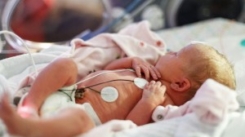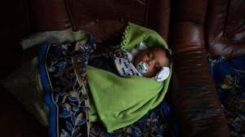Human milk is a critical resource for infants designed to meet the needs of baby at every stage of development. Human milk is alive with immune cells, stem cells, and microbes that come from both the lactating parent and from the baby (Hassiotou et al., 2013; Funkhouser and Bordenstein, 2013). For example, a thick yellow milk produced a few days after birth called colostrum (American Pregnancy, n.d.) can be thought of as baby’s first immunization (Khan, 2012)…. The use of donor milk (or “milk sharing”) is not a new practice for humans. “Allomaternal care” and shared nursing has long been a part of many, if not most, human cultures yet there are no federal laws regulating the use of donor human milk or milk sharing. Milk banks provide a degree of quality control by screening donors based on lifestyle, teaching donors about best practices for expression, storage/transport of breastmilk as well as pasteurizing the donated milk.
Nurturely’s Position on Families at the US-Mexico Border
During 2019, Americans watched in horror as children of all ages were forcibly separated from their parents at the U.S.-Mexico border. While much of ...

